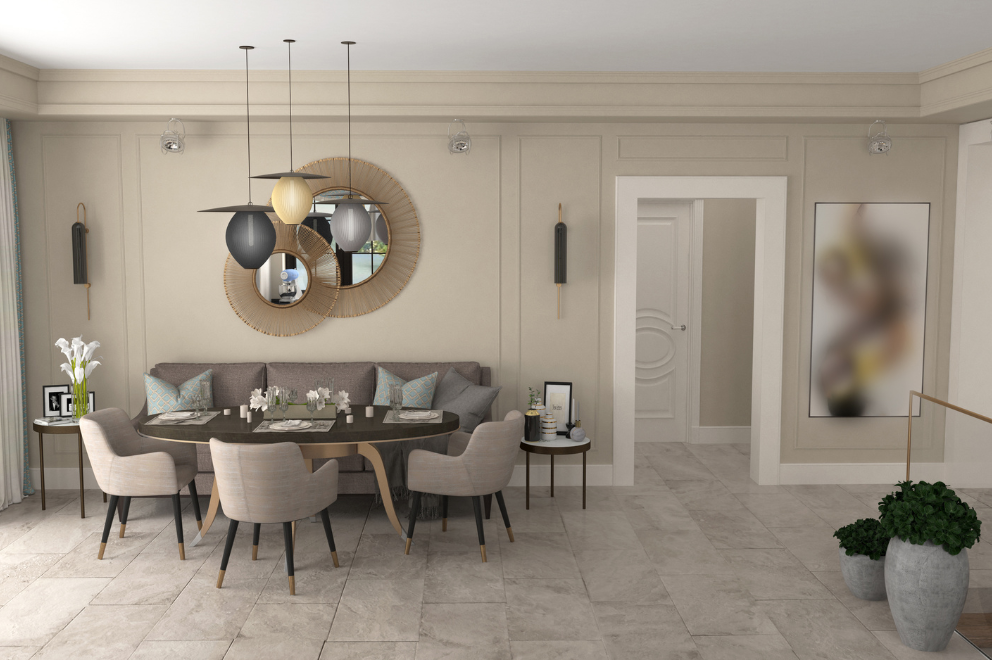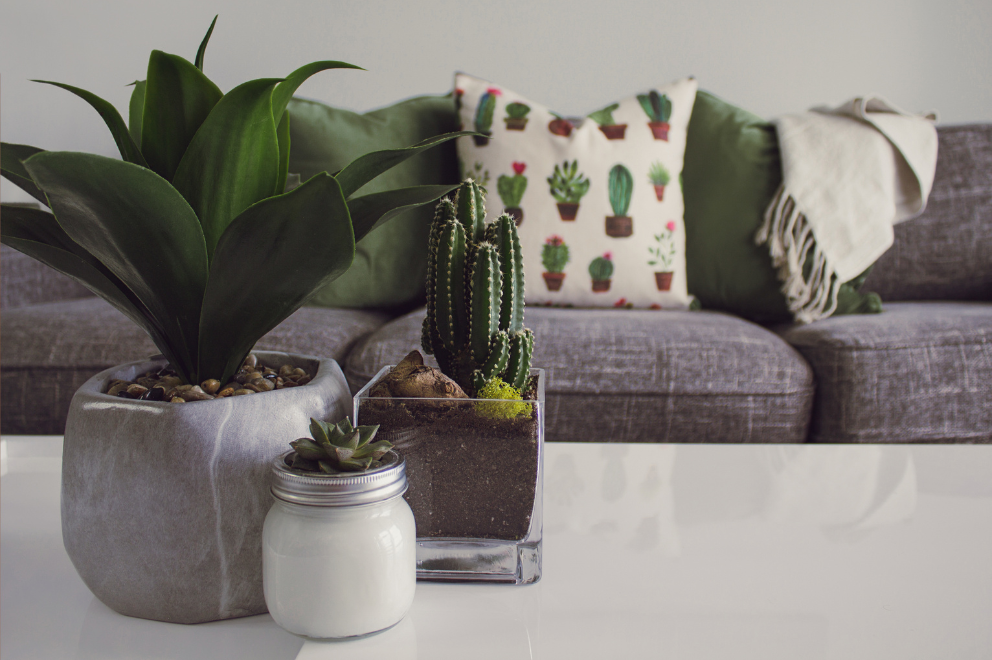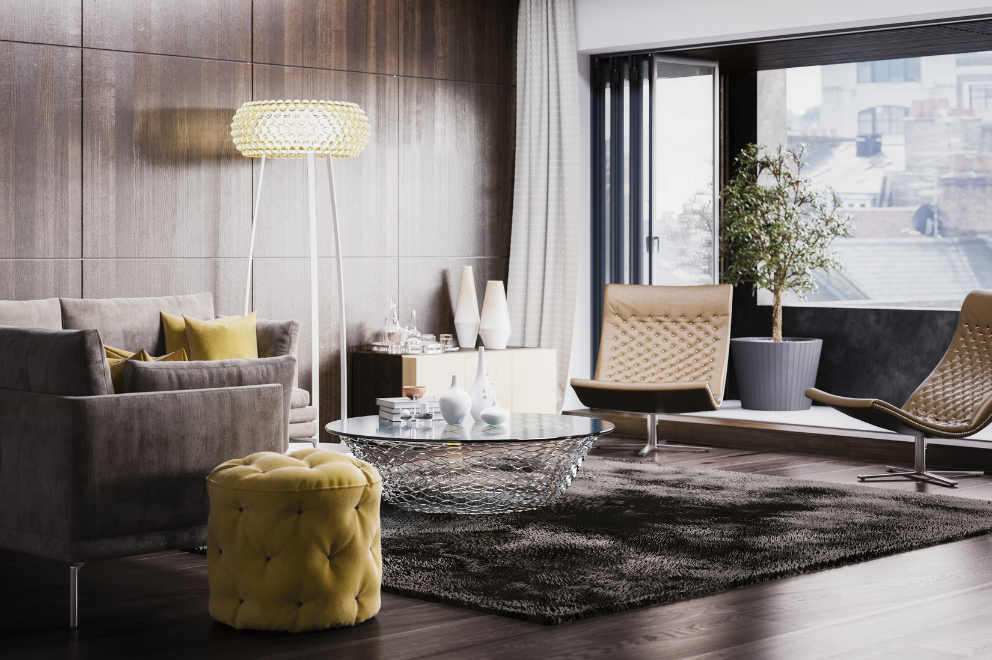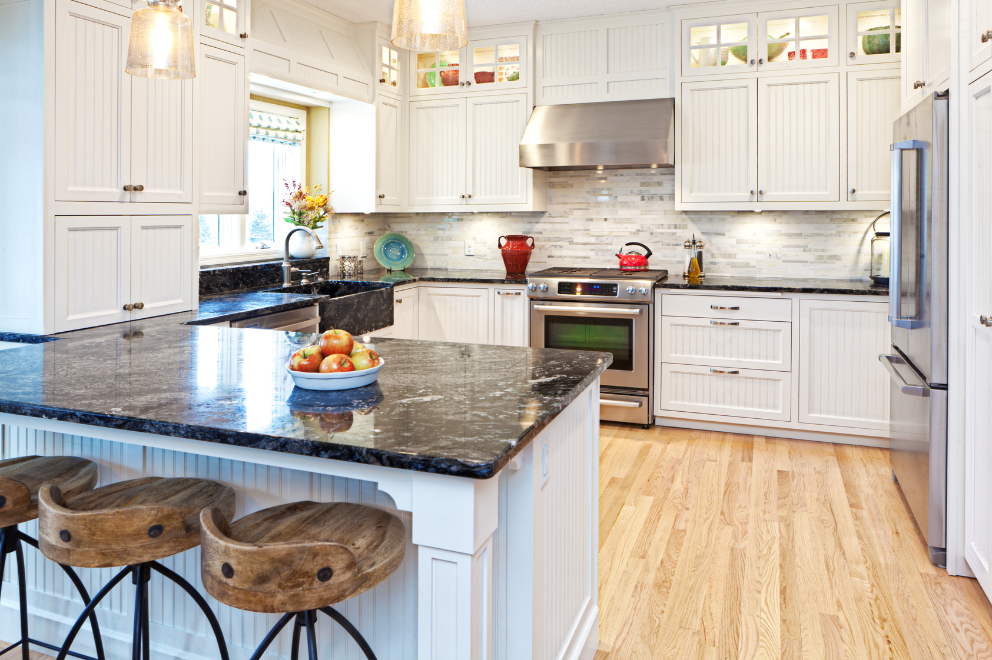
When it comes to a beautiful and functional space, the words “design” and “decor” get thrown around sometimes interchangeably, but what is the difference between design and decor?
Understanding the difference between design and decor is important if you’re about to embark on a renovation or build, or even just want to refresh your living space.
In this post, we’ll break down what each term means, the differences, and how they work together to create beautiful interiors. Knowing these distinctions will help you make informed choices, ensuring that your space is not only stylish but also functional and personalized to your needs.

Interior design is the art and science of understanding how people behave to create spaces within a building. It’s a big, complicated job that involves concept development, space planning, site visits, programming, research, communicating with the project stakeholders, construction management, and execution of the design.
Interior design is more than just the look of a room; it’s about the flow and function of a space, so it’s practical, safe, and meets the needs of the people who use it. For example, an interior designer might reconfigure a kitchen layout to improve efficiency, select materials that are durable, and integrate lighting that enhances the ambiance and function of the space.
Interior designers work with architects, builders, and clients from the beginning of a project. They need to understand the building codes, regulations, and technical aspects that affect how spaces are built and used.
So interior design is not just about choosing colors or furniture; it’s about creating a cohesive plan that considers the spatial layout, structural changes, lighting schemes, and overall experience of the space.
By looking at both the practical and aesthetic aspects interior designers create spaces that are not only beautiful but tailored to the lifestyle and needs of the people who use them.

Interior designers think about how to use the space best. They consider how people will move through the space, the flow between areas, and the relationships between objects and furniture.
A well designed space is beautiful and functional. Designers think about the people using the space and all the functional requirements. For example, a kitchen design will incorporate ergonomics so cooking and food preparation is easy and enjoyable.
Interior design is modifying the architectural integrity of a space. This could be changing the layout of a room, adding or removing walls, built in shelves, or custom cabinetry.
Interior designers choose the materials for flooring, walls, countertops, and other surfaces. They consider durability, aesthetics, maintenance, and cost when choosing materials like wood, stone, tile, or fabric.
Lighting is key to the functionality and aesthetics of a space. Designers plan for natural light, and artificial light, and the strategic use of both to achieve the desired mood.
Designers create color palettes that set the tone of the space and the preferences of the occupants. Color can affect perception, mood, and the feeling of warmth or coolness in a room.

Interior decor is the process of adding decorative elements to a space. Decor focuses on aesthetics, emphasizing the visual appeal of a room over functionality and layout, unlike interior design.
Decor involves selecting furniture, color schemes, artwork, rugs, and accessories to achieve a specific look and ambiance.
Unlike interior designers, decorators don’t do structural planning or major changes to a space. Their work starts after the design foundation has been laid. Decorators focus on the finishing touches that turn a space from functional to beautiful.
They bring their own style and personality to a space and tailor it to the occupant’s personality and taste. Decorators work with interior designers to align decor choices with the overall design but focus on styling through accessories.

An interior decorator is all about making a space look good through the thoughtful placement of decoration. Their job is to create a beautiful space that reflects the style and taste of the people who live there.
Unlike interior designers who work on structural changes and space planning, interior decorators come in after the big elements of a space, like layout and construction, are done.
Interior decorators choose furniture that fits the style and function of a room. They consider size, shape, and color to make sure the furniture works in the space and meets the needs of the people who live there. They also place the furniture to maximize comfort and flow in the room.
Choosing color palettes is a big part of a decorator’s job. They select wall colors, fabric patterns, and textures to create a cohesive look. Textiles like curtains, cushions, and rugs are chosen to add visual interest and layers of texture and warmth to the space.
Decorators choose accessories like artwork, lamps, vases, and decorative objects that fit the room’s theme. These accessories are chosen to add personality and style and tie in the design elements of the room.
While not as involved as in interior design, lighting is still important in decor. Decorators choose light fixtures and placement to enhance the ambiance of the space and highlight key areas or features.
Interior decorators work with clients to understand their style and taste. They incorporate personal items like family photos or heirlooms into the decor to make it feel like their space.
The decorator’s role often involves adding the final details that bring a room together. This includes arranging decorative items, adjusting color schemes, and making sure everything works together to create a cohesive and beautiful space.

When starting a home renovation, decide whether to hire a designer, decorator, or both. Each offers unique skills and expertise. Understanding the benefits of hiring designers or decorators helps achieve the best outcome for your space with their expertise.
Hire an interior designer if you need major renovations, structural changes, or a comprehensive layout overhaul. Designers are also essential for projects that require knowledge of building codes and regulations. An interior decorator is ideal for refreshing a space, updating decor, or styling without major structural changes. They focus on aesthetics, such as selecting colors, furnishings, and accessories to enhance the look of a room.
Hiring a designer ensures a functional, well-planned space with compliance to building codes, while a decorator adds personal style and visual appeal, enhancing the overall ambiance.
Generally, interior designers can be more expensive due to their involvement in structural changes and comprehensive project management. Decorators may be less costly as they focus on aesthetic updates and styling.
Research professionals with experience relevant to your project. Look at their portfolios, read client reviews, and ensure their style aligns with your vision. Schedule consultations to discuss your needs and gauge compatibility.
While home decor and furniture serve different purposes, they work together to create a harmonious living environment. Quality furniture provides the foundation for a room, while decor adds the finishing touches that bring warmth and personality. A well-decorated space balances both elements, ensuring it is both functional and visually appealing. Understanding the distinction between home decor and furniture allows for smarter design choices. By thoughtfully combining these elements, you can create a space that is not only beautiful but also practical and reflective of your unique style.

Emma Grace, with a background in product design from Stanford, has crafted elegant yet functional home furniture since 2010. She became a part of our editorial family in 2016, sharing ideas on combining aesthetics with utility. Emma spends her downtime exploring artisanal markets.

Hi there! I’m Aisha Harper. With a background in exploring breathtaking destinations and a deep appreciation for creating warm, inviting spaces, I’ve combined my passion for adventure and home into a fulfilling career. From scaling mountains to styling living rooms, I love blending the thrill of the outdoors with the comfort of home, inspiring others to do the same.